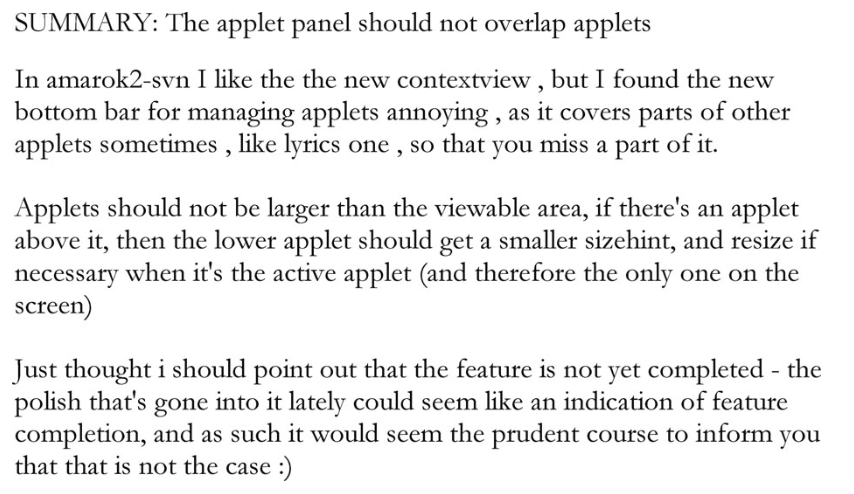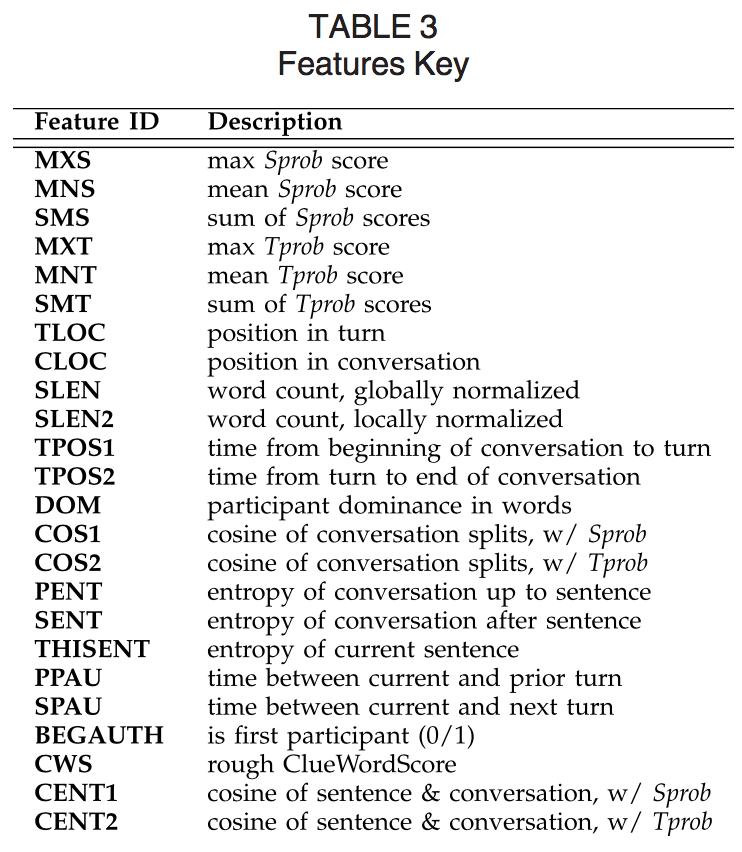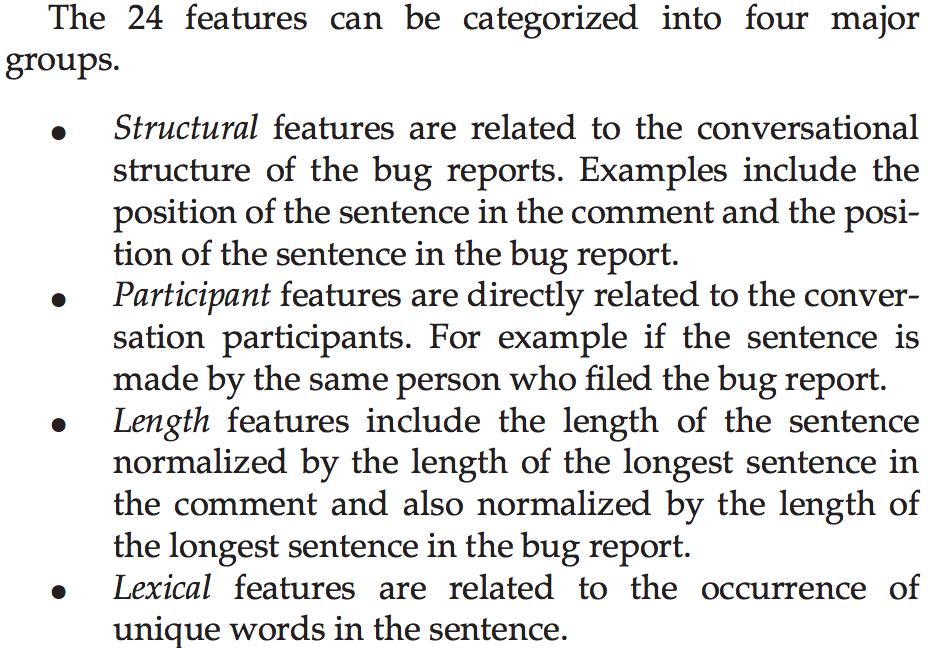Automatic Summarization of Bug Reports
 |
|
CONTENT: example : KDE bug report: https://bugs.kde.org/show_bug.cgi?id=188311 
(其中还有很多comments没显示)
构建分类器,对comments中的每一句话(sentence)进行二分类。其中,0代表不选入summary,1代表选入summary。
最终,生成对bug report的答案:
 |
|
研究问题:
|
| 实验方法:
1.找一帮人(10个人),对5个开源项目(Eclipse,Platform,Gnome,Mozilla和KDE)的bug report进行人工的总结,最后对每个bug report,总结出所谓的gold standard summary(GSS)。 2.根据语料库的不同(email,email&meeting data,bug report data),定义统一的特征,分别建立三个分类器。 为什么选择email和meeting data,是因为,他们都属于conversation(类似于对话的形式)的数据。 所谓的conversation features:
特别地,对于第一个分类器,基于email threads: 第二个分类器,基于email threads和meeting: 第三个分类器,基于bug report: 采用一部分bug report拿来做训练,每句话同时由三个人看过。0代表没有一个人将这句话纳入gold standard summary,1代表只有一个人将这句话纳入gold standard summary,以此类推。。。 因此,2和3(≥2)表示为positive sentence。 3.对于同一个(新的)bug report,三个不同的分类器都会生成三个不同的summary。 将其与gold standard summary进行比较,看看哪个更接近gold。 |
|
个人观点: 对于bug report的summary,更多应该针对于具体的内容而言,而其中的一些feature,例如,word count,position等显然没有十分丰富的意义,更多应该考虑一些语义方面的信息转化成为可以量化的feature。 |
| 备注:TSE2013 |
If you have any questions about this article, welcome to leave a message on the message board.
Brad(Bowen) Xu
E-Mail : maxxbw1992@gmail.com







 浙公网安备 33010602011771号
浙公网安备 33010602011771号